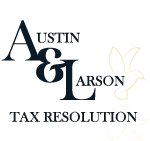Tax Lawyer insights: Are you struggling with federal tax debt? There’s help available. The IRS Fresh Start Program aims to assist individuals and small businesses in settling outstanding taxes and moving forward. Here’s an overview of the program and tips on checking if you qualify.

IRS Fresh Start Program: What You Need to Know
The IRS Fresh Start Program offers various solutions, not just one. It’s designed to ease the burden for taxpayers in trouble. If you’re behind on taxes, this program lets you break down what you owe into smaller, more manageable payments, reducing your stress. It also provides ways to prevent harsh actions like wage garnishments and bank levies.

Understanding the IRS Fresh Start Initiative
Are you looking for ways to manage your tax debt? The IRS Fresh Start Initiative offers several options based on your specific financial needs and how much you owe. Let’s explore what this could mean for you.
Options for Payment Plans Through the IRS Fresh Start Initiative
The IRS provides streamlined installment plans called Streamline Installment Plans:
Short-term payment plan: This is available if you owe less than $100,000 and can pay it off within 120 days.
Long-term payment plan (installment agreement): You can take up to 72 months to pay if your debt is $50,000 or less. If you owe $25,000 or less, the maximum period is 60 months. For businesses with a debt of $25,000 or less, the term is limited to 24 months.
Extended-term repayment plan: Sometimes, if you work with a tax relief firm, they can negotiate a longer payment period with the IRS, depending on your income, expenses, and debts.
Partial Pay Installment Plans
This plan allows you to make monthly payments that are less than the total tax debt you owe because you can’t pay the full amount before the debt expires.
Other Relief Options in the IRS Fresh Start Program
If the installment plans don’t fit your situation, consider these alternatives:
Offer in Compromise (OIC): This option might be available if you can’t afford to pay your tax debt due to limited assets or income. If approved, you could settle your debt for a fraction of what you owe, with options to pay in a lump sum or through monthly payments over 24 months.
Currently Not Collectible Status: If you’re in this status, your tax debt doesn’t disappear, but the IRS pauses its collection efforts until your financial situation improves.
Penalty Abatement: This could reduce the penalties imposed by the IRS if you fulfill certain conditions.
In many cases, you might need the assistance of a tax professional to navigate these options. It’s also a good idea to do some research on your own to understand more about what’s available.
Understanding and managing your tax obligations can be straightforward with the right information and approach. Whether you opt for a payment plan or another relief option, the IRS Fresh Start program Initiative is designed to help make your financial load lighter.

Who Is Eligible for the IRS Fresh Start Program?
Here’s a guide to understanding who can access tax relief through the IRS and which types of debt fall under this program.
Can Any Taxpayer Apply for the IRS Fresh Start Initiative?
Not everyone can apply. To be eligible, you must owe back taxes. Additionally, each program within the initiative has specific guidelines you must follow.
Eligibility for the General Initiative
You must be up-to-date with all federal tax filings and owe less than $50,000 in back taxes, interest, and penalties combined.
If you own a small business, you may qualify for relief if your total payroll tax debt does not exceed $25,000. You must also be current with federal tax returns and quarterly tax payments.
What Debts Does This Cover?
The Fresh Start Initiative mainly covers federal back taxes, interest, and penalties. For back taxes owed to your state, you should contact your state tax authority to explore available tax debt resolution options.

What are the Advantages of the IRS Fresh Start Program?
The IRS Fresh Start Program offers a range of benefits:
Flexible Payment Options with the Fresh Start Program
This program provides multiple ways to manage your tax debt repayment based on your financial circumstances. It allows you to set up a payment plan that extends your payment period, reducing the burden if you’re experiencing financial difficulties temporarily.
Easing IRS Liens and Levies
The Fresh Start Program can significantly lessen the challenges of tax liens. It may even stop a lien from being placed or assist in removing one if it’s already affecting you.
Making Tax Payments Easier
With an installment agreements plan, your monthly tax payments become more affordable, easing the stress of large debts. Alternatively, you can look into other solutions within the program that lessen penalties and interest, making your total due more manageable.
How to Enroll in the IRS Fresh Start Program
The application process varies depending on the option you choose. Typically, you’ll need to fill out specific forms and provide the necessary documentation. Make sure to check if you’re eligible before applying to ensure a smooth process and prevent any setbacks.

Key Points to Understand About the IRS Fresh Start Program
Common Misunderstandings and Their Corrections
Let’s address some frequent misunderstandings regarding the IRS Fresh Start Initiative:
Misunderstanding: The Fresh Start Program can wipe out all your tax debt.
Correction: While the program might lower your debt, it doesn’t eliminate all tax debts completely. Its main purpose is to make your debt easier to handle, not to completely remove it.
Misunderstanding: After enrolling in the program, you don’t have to pay taxes anymore.
Correction: You must continue to file and pay any new taxes. This program mainly deals with previous tax obligations.
What to Expect After Joining the Fresh Start Initiative?
You need to stick to the specific terms of the relief option you choose to effectively manage your federal income tax debt. Failing to do so can lead to your removal from the program and the IRS might start collecting the debt again.
Conclusion
The IRS Fresh Start Program offers a valuable lifeline for those grappling with federal tax debt. This initiative provides various flexible and manageable options for individuals and small businesses to settle their taxes and regain financial stability. Whether it’s through streamlined installment plans, partial pay arrangements, or an Offer in Compromise, the program is tailored to reduce financial strain and prevent severe IRS actions such as liens and levies.
Eligibility for the program is specific, targeting taxpayers who are up-to-date with their tax filings and owe a manageable amount in back taxes, interest, and penalties. It’s essential for applicants to thoroughly understand the eligibility criteria and program specifics to optimize the benefits and ensure tax compliance with the terms.
By making informed decisions and possibly seeking advice from tax professionals, those eligible for the Fresh Start Program can find the most suitable path to resolving tax issues and advancing toward a more secure financial future. Remember, staying informed and proactive is key to effectively managing tax responsibilities and benefiting from relief programs like the IRS Fresh Start Initiative.
FAQs: IRS Fresh Start Program
1. What is the IRS Fresh Start Program?
The IRS Fresh Start Program is designed to help individuals and small businesses manage and overcome their federal tax debts. It offers various options such as installment plans and offers in compromise, aiming to make tax repayment more manageable and prevent severe IRS actions like wage garnishments and bank levies.
2. Who is eligible for the IRS Fresh Start Program?
Eligibility for the Fresh Start Program requires that taxpayers be up-to-date with all federal tax filings. Individuals must owe less than $50,000 in back taxes, interest, and penalties combined, while small businesses should have a total payroll tax debt of no more than $25,000. Both must also be current with federal tax returns and quarterly tax payments.
3. What types of payment plans are available under the IRS Fresh Start Program?
The program offers several payment options:
Short-term payment plan: Available for debts under $100,000, payable within 120 days.
Long-term payment plan: Available for debts $50,000 or less, with up to 72 months to pay. For businesses with debts of $25,000 or less, the term is limited to 24 months.
Partial Pay Installment Plan: Allows monthly payments that are less than the total tax debt for taxpayers who cannot pay in full before the debt expires.
4. Can the IRS Fresh Start Program eliminate all my tax debts?
No, the Fresh Start Program does not eliminate all tax debts. It can reduce the amount you owe and break it into more manageable payments, but it primarily focuses on making debt easier to handle rather than erasing it.
5. How do I apply for the IRS Fresh Start Program?
To apply for the IRS Fresh Start Program, you need to fill out specific forms and provide the necessary documentation. It’s crucial to check your eligibility before applying to ensure a smooth process. Depending on the chosen relief option, different forms and procedures will apply. Consulting with a tax professional can help navigate the application process effectively.


Recent Comments